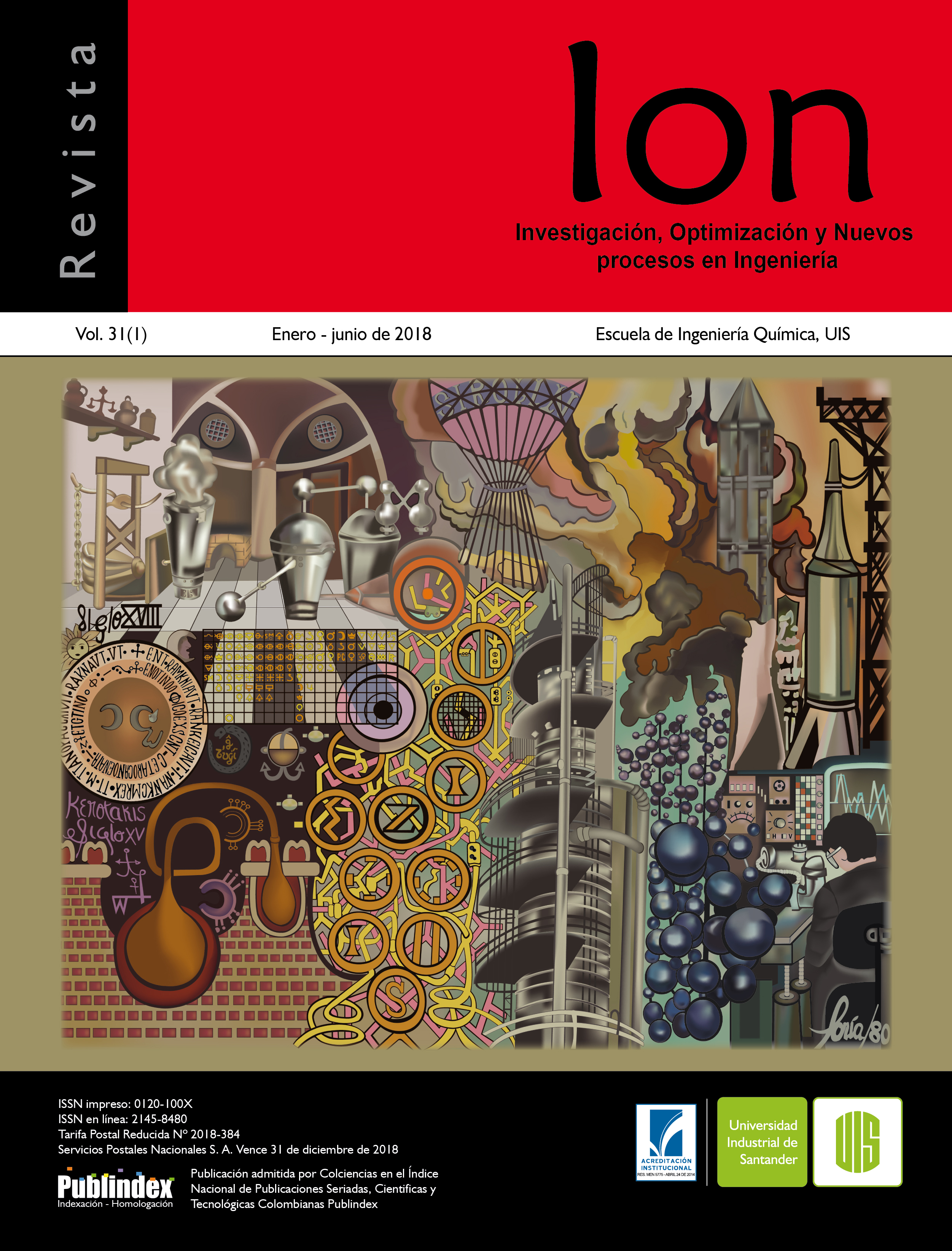Evaluation of the performance of the calendula essential oil (Calendula Officinalis L) obtained by OAHD
Published 2018-09-28
Keywords
- extraction of essential oils,
- calendula essential oil,
- extraction yield,
- hydrodistillation,
- ohmic heating
How to Cite
Abstract
In this work yield (%v/w) of calendula essential oil (Calendula officinalis L.) obtained by two methods, hydrodistillation (HD) and ohmic-assisted hydrodistilation (OAHD) was determined; fresh flowers (Ff) and dried flowers (Fs) were used. The effect of the extraction methods and the state of the flower on the total extraction time (min), oil accumulation time (min) and extraction yield (amount of oil extracted, mL per 100 grams of plant material) was evaluated. The results showed significant differences (p<0.05) when comparing the total time of extraction (min) and the yield (% v/w) as a function of the method of extraction and the state of the flower. The best results were obtained by OAHD method, registering yields of 1.249% for Ff and 1.289% for Fs, an indication that this is a superior extraction method when compared to hydrodistillation. Analyzing yield (% v/w) versus extraction time (min) indicates that the maximum amount of oil was registered for fresh samples both when using HD and OAHD, but when using dried flowers (Fs), longer times were registered both for HD and OAHD, therefore, the state of the plant material influenced the amount of oil obtained and the extraction kinetics.
Downloads
References
[2] Morsy NFS. A short extraction time of high quality hydrodistilled cardamom (Elettaria cardamomum L. Maton) essential oil using ultrasoundas a pretreatment. Ind Crops Prod. 2015;65(3):287-92.
[3] Stanojevic L, Radulovic N, Djokic T, Stankovic B, Ilic D, Cakic M, Nikolic V. The yield, composition and hydrodistillation kinetics of the essentialoil of dill seeds (Anethii fructus) obtained by different hydrodistillation techniques. Ind Crops Prod. 2015;65(3):429-36.
[4] Gavahian M, Farahnaky A, Javidnia K, Majzoobi M. Comparison of ohmic-assisted hydrodistillation with traditional Hydrodistillation for the extraction of essential oils from Thymus vulgaris L. Innov Food Sci Emerg Technol. 2012;14:85-91.
[5] Gavahian M, Farahnaky A, Farhoosh R, Javidnia K, Shahidi F. Extraction of essential oils from Mentha piperita using advanced techniques: Microwave versusohmic assisted hydrodistillation. Food Bioprod. Process. 2015;94(2):50-8.
[6] Blumrosen G, Abazari A, Golberg A, Yarmush M, Toner M. Single-step electrical field strength screening to determine electroporation induced transmembrane transport parameters. Biochim Biophys Acta. 2016;1858(9):2041-9.
[7] Salomé LF, Soto RM, Cruz N, González V. Chemical composition of scented extracts obtained from calendula officinalis by three extraction methods. Bot Sci. 2015;93(3):633-8.
[8] Abdullabekova V, Juraeva A, Azizov O, Yunusxodjaeva N. Essential Oil of caléndula officinalis. Tashkent pharmaceutical institute. 2014;7(2):1-4.
[9] Damyeh M, Niakousari M. Impact of ohmic-assisted hydrodistillation on kinetics data, physicochemical and biological properties of Prangos ferulacea Lindle. Essential oil: Comparison with conventional hydrodistillation. Innov Food Sci Emerg Technol. 2016;33:387–96.
[10] Filly A, Fernandez X, Minitu M, Visinoni F, Cravotto G, Chemat F. Solvent-free microwave extraction of essential oil from aromatic herbs. Food Chem. 2014;150(6):193-8.
[11] Boukroufa M, Boutekedjiret C, Petigny L, Rakotomanomana N, Chemat F. Bio-refinery of orange peels waste: A new concept based on integrated green and solvent free extraction processes using ultrasound and microwave techniques to obtain essential oil, polyphenols and pectin. Ultrason Sonochem. 2014;24(1):72-9.
[12] Armijo J, Vicuña G, Romero y Otiniano C, P, Condorhuamán C, Hilario R. Modelamiento y simulación del proceso de extracción de aceites esenciales mediante la destilación por arrastre con vapor. Rev. Per. Quím. Ing. Quím. 2012;15(2):19-27.
[13] Kusuma HS, Mahfud M. Microwave hydrodistillation for extraction of essential oil from Pogostemon cablin Benth: Analysis and modelling of extraction kinetics. J Appl Res Med Aromat Plants. 2017;4(1):46-54.
[14] Fitzpatrick J, Lauwe A, Coursol M, O’Brien A, Fitzpatrick K, Ji J, et al. Investigation of the rehydration behaviour of food powders by comparing the behavior of twelve powders with different properties. Powder Technology. 2016;297(11):340-48.
[15] Rojas ML, Agusto PED. Microstructure elements affect the mass transfer in foods: The case of convective drying and rehydration of pumpkin. LWT - Food Sci. Technol. 2018;93(4):102-8.
[16] Zielinska M, Markowski, M. The influence of microwave-assisted drying techniques on the rehydration behavior of blueberries (Vaccinium corymbosum L.). Food Chem. 2016;196(7):1188-96.

